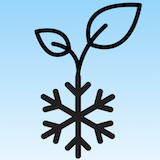Moringa: 1-Month Results / Grow Boxes / Scaling Up
1-month Moringa check-in. Results of experiments (outside vs. inside, potting mix vs native soil), the realization of grow boxes, and progress establishing a pipeline of these prolific “natural multivitamins” for self-sustenance through the Grand Solar Minimum.
Please share with your friends information on the Grand Solar Minimum and the resulting climate disturbances we are experiencing, as well as intensification of the crop losses that have already begun.
START GROWING YOUR OWN FOOD TODAY — ACHIEVE FOOD SOVEREIGNTY!
Blog: http://IceAgeFarmer.com
Twitter: https://twitter.com/IceAgeFarmer
Facebook: https://facebook.com/IceAgeFarmer
Some notes:
Moringa leaves contain:
• 2 times the protein of yogurt
• 7 times the vitamin C of oranges
• 3 times the potassium of bananas
• 4 times the vitamin A of carrots
• 4 times the calcium of milk
Leaves are used as a purgative. ( — HEADS UP !! )
Juice from the leaves is believed to have a stabilizing effect on blood pressure and is used to treat anxiety.
It is believed to control glucose levels in cases of diabetes.
The oil from Moringa (35-40% by weight of the seeds) can be used for cooking and a number of purposes: cooking and cosmetics; and because it won’t spoil and turn rancid, it is also used as a preservative and machinery lubricant, even being used as a lubricant in fine watches.
Mixed with honey and followed by a drink of coconut milk 2 or 3 times a day, leaves are used as a remedy for diarrhea, dysentery and colitis.
Leaf juice, sometimes with carrot juice added, is used as a diuretic.
Eating leaves is recommended in cases of gonorrhea because of the diuretic action.
Leaves and buds are rubbed on the temples for headache.
A poultice is made from fresh leaves and applied to reduce glandular swelling.
Leaf juice is used as a skin antiseptic.
Leaves are used to treat fevers, bronchitis, eye and ear infections, scurvy, and catarrh (inflammation of the mucus membrane).
Leaves are considered to be anthelmintic ( able to kill intestinal worms).
Eating leaves is believed to increase a woman’s milk production and is sometimes prescribed for anemia.
